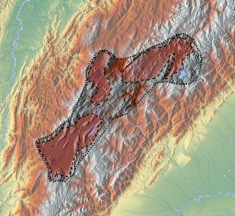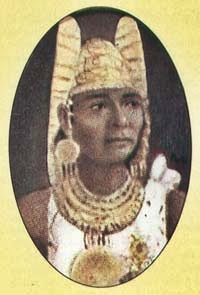 |
| Part of a series on |
| Muisca culture |
|---|
| Topics |
| Geography |
| The Salt People |
| Main neighbours |
| History and timeline |







This article describes the role of women in Muisca society. The Muisca were the original inhabitants of the Altiplano Cundiboyacense (present-day central Colombian Andes) before the Spanish conquest in the first half of the 16th century. Their society was one of the four great civilizations of the Americas.[1]
Women held an important and largely egalitarian role in Muisca society. While men were responsible for hunting, warfare, and other activities, women took charge of sowing the fields, preparing food and chicha, and educating children. Both men and women participated in religious rituals. The most important deities in Muisca culture were female: Chía, the goddess of the Moon; Huitaca, the goddess of sexual liberation; and Bachué, the mother goddess of the Muisca people.
While the first chroniclers during the period of conquest and early colonization—such as Gonzalo Jiménez de Quesada, Pedro Simón, Juan de Castellanos and Lucas Fernández de Piedrahita—were all male, 20th- and 21st-century anthropology has seen significant contributions from women scholars. Key contributors to the understanding of women in Muisca society include Muisca scholars Ana María Groot, Marianne Cardale de Schrimpff, Sylvia Broadbent, Ana María Gómez Londoño, Martha Herrera Ángel, among others.
- ^ Ocampo López, 2007, p.26